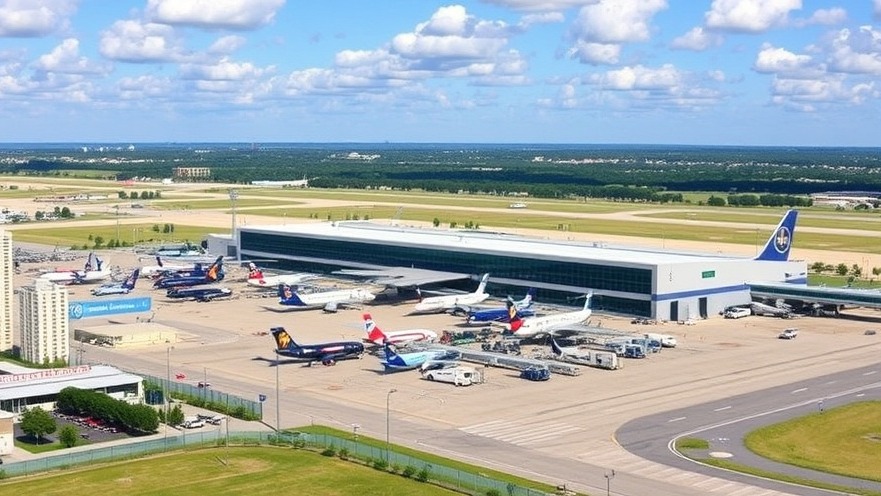
Analyzing the Downward Trend: Passenger Traffic at Austin-Bergstrom International Airport
May 2025 reveals a notable decline in passenger traffic for Austin-Bergstrom International Airport (AUS), as reported by city officials. With a total of 1,935,429 passengers recorded in May—a 6.43% decrease compared to the previous year—this trend raises important questions about the factors influencing air travel in Austin and beyond.
The Airlines' Performance: Winners and Losers
In analyzing the performance of various airlines operating out of AUS, we see mixed results. Notably, Southwest Airlines saw a significant drop of 8.7% in passenger numbers, whereas competitors like Delta Air Lines and British Airways reported gains of 5.4% and 42.7%, respectively. This disparity indicates possible shifts in consumer preference and operational strategies among airlines that merit further investigation.
Examining Cargo Traffic: A Different Picture
Interestingly, air cargo figures tell a slightly different story. While overall air cargo dropped 11.66%, international air cargo increased by 17.20%, highlighting an interesting bifurcation in operations. Companies such as Air Transport International reported gains, suggesting possible growth in international commerce even amidst declining passenger traffic.
Impacts of Wider Economic Factors
This recent data may not exist in a vacuum; broader economic forces likely shape these trends. In recent months, Austin's economy has experienced various stressors, including rising inflation and changes in consumer behavior post-pandemic. Understanding these dynamics is crucial for local policymakers and stakeholders as they navigate the evolving landscape.
Looking Ahead: Future Predictions for Austin Travel
As we consider the implications of these trends, the focus should shift towards forecasting future performance. Experts suggest that a gradual recovery could hinge on several factors, including economic stabilization, enhanced travel incentives, and robust marketing strategies by airlines. With city efforts increasingly focusing on attracting talent and tourism, initiatives will be key in revitalizing travel at AUS.
Local Discoveries: Significance for Austinites
For those living in Austin, understanding these traffic patterns provides valuable context regarding transportation trends and economic health. With the city flourishing in technology and cultural sectors, the interconnection of air travel and local business success further emphasizes the need for continued investment in air service capabilities.
Taking Action: Opportunities for Local Stakeholders
City officials and local businesses can leverage this data to advocate for better air service and transportation options. Engaging with the community through public forums will help integrate local insights into evolving policies, ultimately enhancing the viability of Austin as a travel hub.
In summary, the challenge ahead lies not only in addressing current declines but also in leveraging the growth in cargo transport and potential tourism opportunities. As Austin continues to develop, engaging in dialogue about these statistics and their implications will be crucial for a successful future.
To stay updated on local transportation initiatives, follow Austin city council news and participate in ongoing community discussions that shape our airport's future.
 Add Element
Add Element  Add Row
Add Row 



Write A Comment